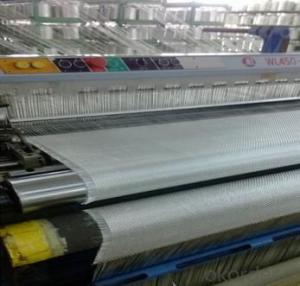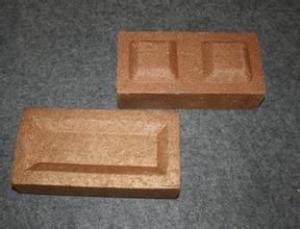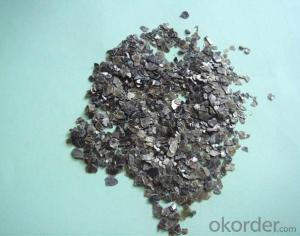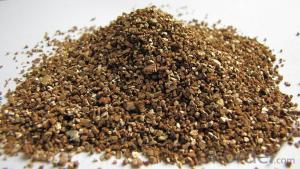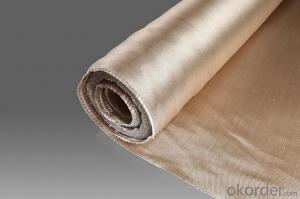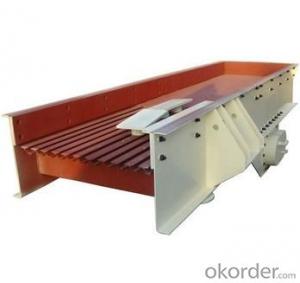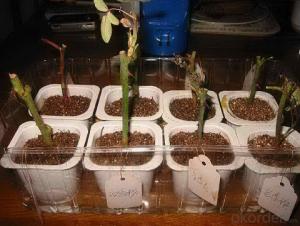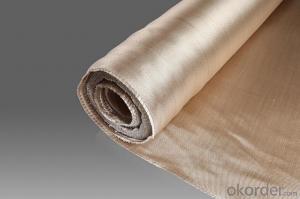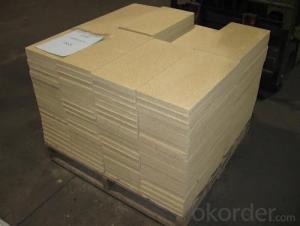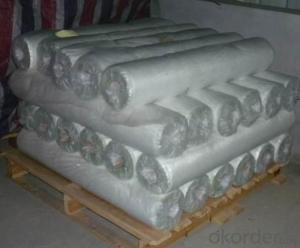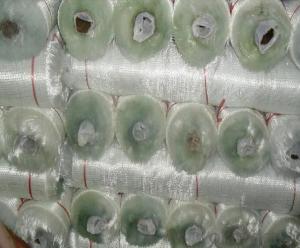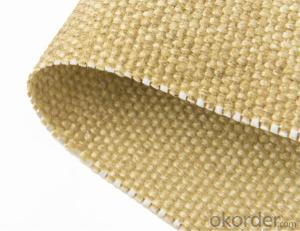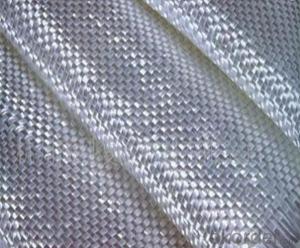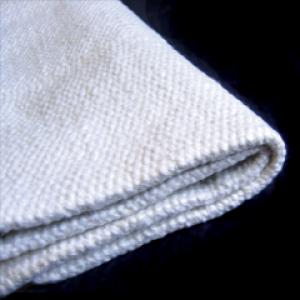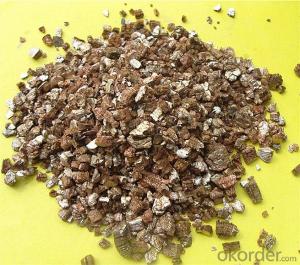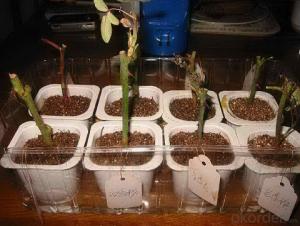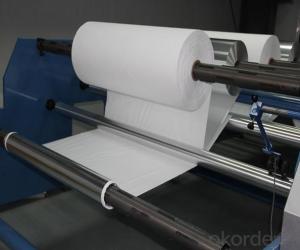Ceramic Vermiculite Fabrics with Excellent Textile
- Loading Port:
- Tianjin
- Payment Terms:
- TT OR LC
- Min Order Qty:
- 500 m²
- Supply Capability:
- 200000 m²/month
OKorder Service Pledge
OKorder Financial Service
You Might Also Like
1.Description of Ceramic Vermiculite Fabrics with Excellent Textile:
We have designed Ceramic Vermiculite Fabric for applications involving high temperature processes. This fabric resists most acids and alkalis and is unaffected by most bleaches and solvents. It is highly flexible and conformable. Applications for this product include welding blankets and curtains, heat shields, etc.
2.Product Description of Ceramic Vermiculite Fabrics with Excellent Textile:
Ceramic Fibre Cloth: 3 mm thick reinforced with SS wire having 15 to 20% organic carrier fibre to facilitate carding process.
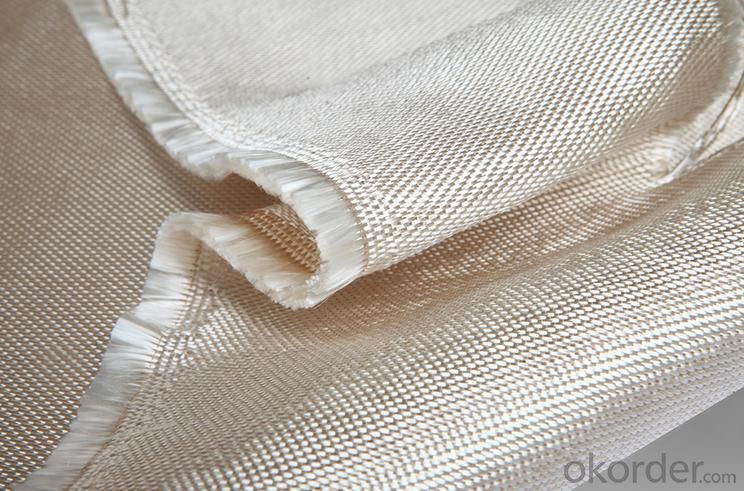
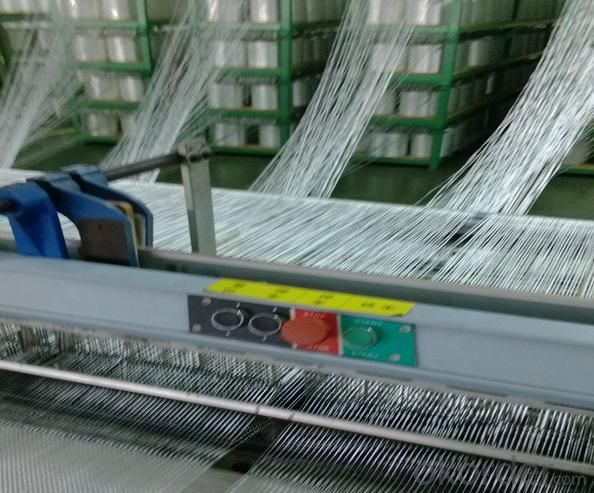
3.Product Application of Ceramic Vermiculite Fabrics with Excellent Textile:
Industrial Heat Resistant Fabrics / Garments / Accessories
Emergency Safety Showers and Eyewash
Marine / Offshore Safety Products / Accessories
Alcohol Detectors / Breathalysers
Oil & Chemical Spill Kits
High Pressure Regulators
Accessories for Protection From Industrial Hazards
Industrial Safety Lockouts – Tag outs
Traffic and Road Safety Products
Welding and Cutting Equipment
Furnace Observation Products and Accessories
Personal Protective Equipment
Respiratory Protection Products
Fall Protection Products
Fire Fighting Equipment & Accessories
4.Technical Data of Ceramic Vermiculite Fabrics with Excellent Textile:
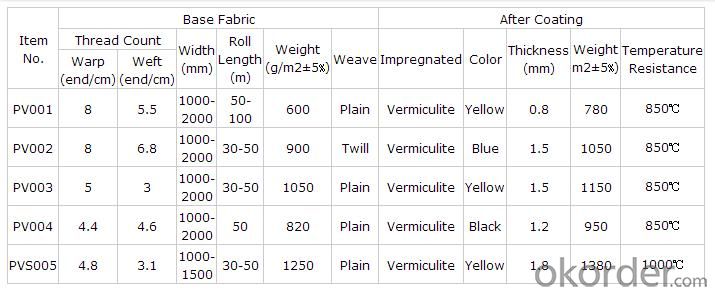
- Q: Is it safe to eat vermiculite?
- Adobe, okorder
- Q: what is the fireprooging materials
- Water, Soil, Horticultural vermiculite, perlite, blotter in a glass, and so on.
- Q: How is it done? Cuttings? Tissue culture? I‘ve managed to keep quite a few alive and i‘d like to start making more. There must be a way to clone them because they have cultivars. ‘Thanks!!
- Leaf cuttings are the most popular method of propagation. Quite often violets will produce suckers from the main stem. These can be separated from the mother plant and put into their own little pots. See source for more information about African violets.
- Q: Main applications of expanded vermiculite
- In the newly emerged soilless cultivation technology, it is an essential raw material. Spread the expanded vermiculite on the roof, it can play a very good insulation effect, so that the house is warm in winter and cool in summer. A partition plate of high-rise building with vermiculite brick masonry, can sound insulation, fire prevention moisture-proof effect, and can reduce the floor load. Vermiculite and a suitable amount of insulation glue can be made into insulation board. At present, vermiculite is also used in medicine, health, animal feed and other industries.
- Q: Its cheap and a friend uses for his cresties egg box. Never heard of it before then though
- You have a good selection of materials to make a progressive filter. Divide your materials into 3 categories: 1. Filtering materials in order of effectiveness- rocks, kitty litter, vermiculite, sand, gauze, cotton paper towels, coffee filters, activated charcoal... etc. 2. Containers- soda bottles, plastic tubing. 3. Attaching materials- hot glue, duct tape. Now you have to put the materials into the soda bottles. Start with the rocks. Cut off the bottom of the bottle, put some gauze in the mouth of the bottle put a hole in the cap, and put in on the bottle. Now turn the bottle over and put in the rocks. This is stage 1 of your filter. Take another bottle with a hole in the cap. Cut off the bottom and duct tape this into the open end of the bottle to hold the rocks in during transport and to act as a funnel. Stage 2 is almost the same. This time use the kitty litter instead of the rocks. Stick the neck of the first stage into the open end of the second stage and use the duct tape to hold them together. Stage 3: Vermiculite Stage 4: Sand, but now you have to use the paper towel instead of the gauze because the sand can get through the gauze. Stage 5 is just the coffee filters Stage 6 is the activated charcoal and use the cotton in the neck to keep the charcoal in the bottle. The last stage should again use a coffee filter to get any bits of charcoal that may have escaped. If you duct tape each stage carefully to the next you will have a tall progressive filter. You pour in the polluted water at the top and you will have pretty well filtered water at the bottom.
- Q: I have some henchicks that have inspired me to start an indoor dish garden using other cacti or succulents what kind of soil/sand/gravel base combination should I start with?. I will be using a wide, shallow dish, like a flat bottomed ceramic dishhopefully at least 12-16 inches in diameter.and maybe only 2 or 3 inches deep.
- The key to dealing with cacti is they don't like their feet wet. So you need a very sandy/vermiculite soil with a little organic matter, but the key is that it be well-drained. You can't have a closed-bottomed pot, it has to drain out through a hole into some other container. Remember how cacti grow, what kind of environment they are evolved for: every week you pour a glass of water over them, it wets the sandy soil and then drains off. Cacti rot if the dirt is too moist. Water them and then let the soil dry out before watering again. Any nursery will have a bag of cacti soil mix. Anything will do since they are evolved to grow on almost nothing. Keep them in a sunny window and do not allow the soil to remain wet.
- Q: i think it would look better... any advice?
- I use vermiculite.Moisten it with water.You want it moist,but not wet.Use a plastic container ( gladware or even an empty diaper wipe container) make an impression for each egg and place them about 2/3 into the vermiculite but do not cover them completey.Put on a loose-fitting lid or a lid with a few holes punched in it and place it in a warm place. I have incubated eggs on top of my cable box and on top of the refrigerator. The one on the cable box took nearly 100 days to hatch,while the ones on the refrigerator took from 52 to 70 days. Check the eggs every few days to make sure that they are not too wet ( condensation) or too dry ( sunken,dry feeling).Also watch for mold.If the vermiculite starts to dry out,add bit of water,but do not pour it on the eggs.Also,do NOT turn the eggs,as this will cause the embryos to drown.You can carefully pick an egg up,holding it in the exact position that it lays in the container,and hold a flashlight behind dark room.You wil then be able to see the developing embryo.It's pretty cool.When the babies hatch,place them in small containers on damp paper towels until their egg sacs are fully absorbed. Then you can transfer them to an aquarium with a mixture of lizard litter and moist green moss.Make sure the babies stay hydrated ( use a very shallow water dish,like a peanut butter jar lid) and feed them a mixture of hard-boiled egg yolk,chick starter and canned cat or dog food with cooked,finely mashed carrots,banana,scraped apple and small insects.You can also feed aquatic turtle pellets,moistened and mashed. Add a calcium supplement and a vitamin every other day.
- Q: I surface sowed the seeds on normal pot soil in a tray and did not cover the seeds at all. I put these seeds under a T5 grow light for 16 hours a day, and in 3 days I already found out they had their little root germinated!But here is what the packet instructions say:Place seed on the surface of a good free draining, damp seed compost and cover with a fine sprinkling of compost of compost or vermiculite. Seal container inside a polythene bag and keep 15-20C (59-68F) until after germination can take 1-3 months. Do not exclude light, as this helps germination.Well, it seems that light is the MAJOR determinant of the germination!
- It could also be that HEAT is a Major determinant, hon. They aren't in the ground blooming yet, take care of your plantlings. congrats
- Q: I am a bit confused as to where I put the humidity sensor, on top of the perlite, in the perlite or a few inches from it as obviously the perlite will be moister than the atmosphere. Also how deep do I bury the eggs? I have a herpnurseryII, any tips for sucessful hatching?
- Well, I like things simple and care free. I very seldom have to mist a box once I set it up until hatching occurs. I don't just put them into the incubator. I put them into clear plastic lidded tubs with a 3 layer of vermiculite. Wet the vermiculite. Squeeze out all the excess water so you have a snowball in your fist. Open your hand and it should hold its shape. Touch it with a finger on the other hand and it should crumble/fall part easily. That's moist enough. Beginners usually make the mistake of keeping the hatching medium too moist. I used to put a small hole in the container top until I lost a few eggs to friggin #%#%#%#$% (censored) fruit fly maggots a few years ago. Now I don't vent the container or tops at all. I open them for a moment every 1-2 wk. to circulate fresh air (they aren't airtight to begin with and I'm not sure that's even necessary). I don't like to bother my eggs. I do as little as possible to them. I don't remove one unless it molds. I never bury an egg. I make a depression with my fingertip about 1/2 as deep as the egg is wide and place it into the depression, Sharpie mark up, then firm the medium snug to the egg, leaving 1/2 the egg exposed. I have two humidity meters in the box but these days, I never even look at them anymore. I can tell from placing a fingertip to the medium if it needs a bit more moisture. If you do need to add some, use a spray bottle and lightly mist the sides (not the eggs), to permit the water to drip down into the medium. It doesn't take much to bring the humidity back up. You don't want to see moisture built up and dripping from the lid - this can drown your embryos. If you feel better using the probe, then you'll want to sit it inside the container, barely seated into the medium long ways. I highly recommend using covered containers. Good luck, and enjoy your new babies.
- Q: what are some exotic animals that i could realistically keep as a pet, and where can i buy them?
- You could keep foxes, peacocks, emus, or ostriches. However, they all take very specialized care and attention, so you'd have to learn a lot about them beforehand. There are several places on the internet where you can buy those animals, or you can try to contact an exotic animal breeder.
Send your message to us
Ceramic Vermiculite Fabrics with Excellent Textile
- Loading Port:
- Tianjin
- Payment Terms:
- TT OR LC
- Min Order Qty:
- 500 m²
- Supply Capability:
- 200000 m²/month
OKorder Service Pledge
OKorder Financial Service
Similar products
Hot products
Hot Searches
